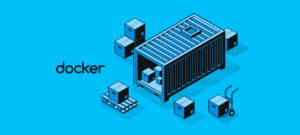Python For Kids
“Python Adventures: Coding Excitement for Beginners” is your ticket to the thrilling world of Python programming. Perfect for beginners, this comprehensive ebook takes you on an exciting journey through the fundamentals of Python, teaching you everything you need to know to start coding with confidence. You can make the future of your children by teaching…
Serverless computing is revolutionizing the way applications are built and deployed, particularly in the DevOps ecosystem. By abstracting server management, serverless computing allows developers to focus on code and functionality rather than infrastructure. This article explores the fundamentals of serverless computing, its benefits, and how it integrates with DevOps practices.
What is Serverless Computing?
Serverless computing is a cloud-computing execution model where the cloud provider dynamically manages the allocation and provisioning of servers. Despite the name, serverless does not mean the absence of servers. Instead, it means that developers do not have to worry about server management. Popular serverless platforms include AWS Lambda, Azure Functions, and Google Cloud Functions.
Benefits of Serverless Computing
- Cost Efficiency: With serverless computing, you pay only for the compute time you consume. There is no charge when your code is not running.
- Scalability: Serverless architectures automatically scale up and down based on demand, ensuring optimal resource usage.
- Reduced Operational Complexity: Developers can focus on writing code without worrying about server provisioning, patching, and maintenance.
- Faster Time to Market: By eliminating the need for infrastructure management, serverless computing accelerates the development and deployment process.
Key Concepts
Function as a Service (FaaS)
FaaS is a primary component of serverless computing. It involves deploying individual functions, which are small pieces of code that perform specific tasks, without managing the underlying infrastructure. AWS Lambda, Azure Functions, and Google Cloud Functions are examples of FaaS.
Backend as a Service (BaaS)
BaaS refers to cloud services that handle backend processes such as databases, authentication, and real-time notifications. Examples include Firebase, AWS Amplify, and Auth0.
Integrating Serverless with DevOps
Continuous Integration and Continuous Deployment (CI/CD)
Serverless computing fits seamlessly into CI/CD pipelines. Here’s how:
- Continuous Integration: Developers can use tools like GitHub Actions, Jenkins, or GitLab CI to automate the build and testing process of serverless functions.
- Continuous Deployment: After successful builds and tests, serverless functions can be automatically deployed to the cloud using tools like AWS CodePipeline, Azure Pipelines, or Google Cloud Build.
Example: Deploying a Serverless Function with AWS Lambda and GitHub Actions
Step 1: Setting Up the AWS Lambda Function
Create a simple Lambda function in Python that returns a greeting message.
# lambda_function.py
def lambda_handler(event, context):
return {
'statusCode': 200,
'body': 'Hello, World!'
}
Step 2: Configuring GitHub Actions
Create a .github/workflows/deploy.yml file in your repository to define the CI/CD pipeline.
name: Deploy to AWS Lambda
on:
push:
branches:
- main
jobs:
deploy:
runs-on: ubuntu-latest
steps:
- name: Checkout code
uses: actions/checkout@v2
- name: Set up Python
uses: actions/setup-python@v2
with:
python-version: 3.8
- name: Install dependencies
run: pip install -r requirements.txt
- name: Package and deploy
env:
AWS_ACCESS_KEY_ID: ${{ secrets.AWS_ACCESS_KEY_ID }}
AWS_SECRET_ACCESS_KEY: ${{ secrets.AWS_SECRET_ACCESS_KEY }}
AWS_REGION: us-east-1
run: |
zip lambda_function.zip lambda_function.py
aws lambda update-function-code --function-name myLambdaFunction --zip-file fileb://lambda_function.zip
Monitoring and Logging
Monitoring and logging are crucial in serverless computing to ensure visibility into function performance and issues.
- AWS CloudWatch: For AWS Lambda, CloudWatch provides detailed logs and metrics.
- Azure Monitor: For Azure Functions, Azure Monitor offers comprehensive logging and monitoring.
- Google Cloud Monitoring: For Google Cloud Functions, Cloud Monitoring delivers metrics and logs.
Real-World Use Cases
- Microservices: Serverless computing is ideal for building microservices, where each function represents a single service.
- Data Processing: Functions can be triggered by events such as changes in a database or file uploads, making serverless a good fit for data processing tasks.
- API Backends: Serverless functions can serve as the backend for APIs, handling HTTP requests and interacting with databases.
Conclusion
Serverless computing is transforming DevOps by simplifying infrastructure management and allowing developers to focus on code. By integrating serverless computing with CI/CD pipelines and leveraging monitoring tools, organizations can achieve faster deployment cycles, greater scalability, and improved cost efficiency. As the technology continues to evolve, serverless computing will play an increasingly significant role in the DevOps landscape.
Embrace the serverless paradigm to enhance your development and deployment processes, and leverage its benefits to deliver robust, scalable applications efficiently.
#ServerlessComputing #DevOps #AWSLambda #AzureFunctions #GoogleCloudFunctions #CI/CD #FaaS #BaaS #CloudComputing #Microservices #ContinuousIntegration #ContinuousDeployment #CloudDevelopment #ServerlessArchitecture #AutomatedDeployment #CloudMonitoring






